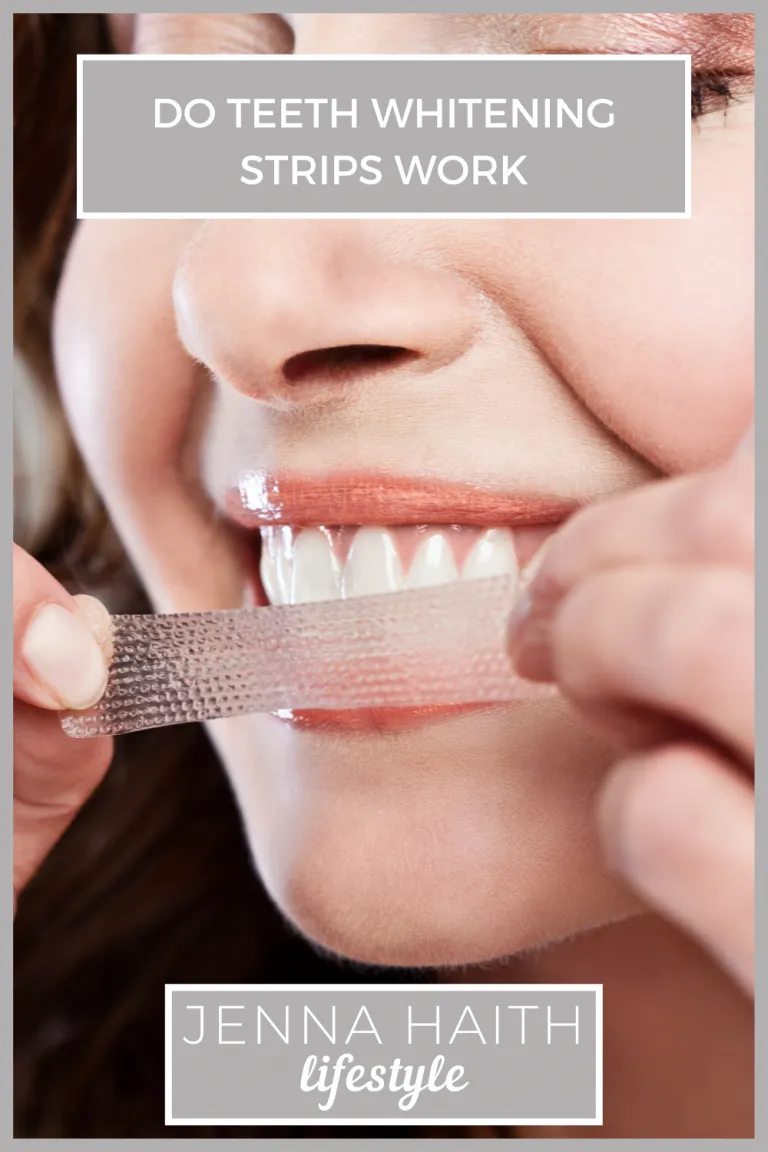What Are Whitening Strips
Whitening strips have become a popular and convenient method for achieving a brighter, more confident smile. These thin, flexible strips are coated with a peroxide-based whitening agent designed to adhere to your teeth and gradually lighten their shade. They are a form of cosmetic dentistry that you can use at home. The effectiveness of whitening strips largely depends on the active ingredient, usually hydrogen peroxide or carbamide peroxide, which penetrates the enamel to break down stain molecules. They offer a relatively affordable and accessible alternative to professional teeth whitening treatments, making them a go-to option for many people looking to enhance their smiles. Understanding the basics of whitening strips is the first step toward maximizing their effectiveness and achieving the desired results.
How Whitening Strips Work
The science behind whitening strips is relatively simple, yet remarkably effective. When you apply a whitening strip to your teeth, the active ingredient, typically hydrogen peroxide or carbamide peroxide, comes into contact with the enamel. These chemicals work by breaking down the stain molecules that have accumulated on and within the tooth’s surface. As the peroxide penetrates the enamel, it causes an oxidation process. This oxidation process breaks the bonds of the stain molecules, effectively lightening their color. The amount of time the strip is in contact with your teeth, along with the concentration of the active ingredient, determines the degree of whitening achieved. Consistent use, as directed, allows for gradual but noticeable improvements in tooth color, resulting in a whiter and brighter smile over time. This process is a superficial one, affecting only the surface stains and some of the intrinsic stains to a certain degree.
Choosing the Right Whitening Strips

Selecting the right whitening strips is crucial for achieving the best results. There are several factors to consider, including the concentration of the active ingredient, the duration of treatment, and your personal oral health. Start by evaluating the strength of the whitening agent; higher concentrations often yield quicker results but may also increase the risk of tooth sensitivity. Consider strips that offer a comfortable fit and full coverage of your teeth to ensure even whitening. Furthermore, research brands and read reviews to gauge the effectiveness and user experience. Some whitening strips are designed for sensitive teeth, which have lower concentrations of the whitening agent, but provide you with a similar whitening effect, without discomfort. You should also consult with your dentist for recommendations. The best whitening strips for you depend on your specific needs, and it may take some experimentation to find the ideal product.
Ingredients to Look For
When choosing whitening strips, pay close attention to the active and inactive ingredients. The primary active ingredients are hydrogen peroxide or carbamide peroxide, which are the bleaching agents responsible for whitening your teeth. The concentration of these ingredients varies, affecting the speed and intensity of whitening. Look for strips with a concentration appropriate for your sensitivity level. Besides the whitening agents, consider the inactive ingredients, such as those that help the strips adhere to your teeth and improve the taste or texture. Some strips contain ingredients like glycerin, sodium hydroxide, and flavors. Be aware of any potential allergens or sensitivities you might have. Additionally, some strips may contain ingredients that can cause temporary tooth sensitivity, so it is essential to consider your overall oral health and needs.
Understanding the Strength Levels
Whitening strips come in various strength levels, and understanding these levels is vital for achieving your desired results safely. The strength of whitening strips is primarily determined by the concentration of hydrogen peroxide or carbamide peroxide. Typically, over-the-counter strips have lower concentrations compared to those used by dentists. Higher concentrations can lead to faster results but may also increase the risk of tooth sensitivity and gum irritation. Start with a lower concentration if you are new to whitening or have sensitive teeth. As you become more comfortable with the process, you can gradually increase the strength. Always follow the manufacturer’s instructions and consult your dentist before starting any teeth-whitening treatment, especially if you have pre-existing dental conditions. Remember that the best strength level is the one that gives you the results you want without causing undue discomfort or harm.
Preparing Your Teeth Before Using Whitening Strips

Preparing your teeth before using whitening strips can significantly enhance the effectiveness of the treatment and protect your oral health. Begin by ensuring your teeth and gums are healthy. Address any existing dental issues, such as cavities or gum disease, before starting whitening. A professional cleaning from your dentist will remove surface stains and plaque, allowing the whitening agent to better penetrate your enamel. Brush your teeth thoroughly before applying the strips to remove food particles and debris. Make sure your teeth are dry before application, as this will help the strips adhere properly. For those with sensitive teeth, consider using a desensitizing toothpaste for a few weeks before starting treatment to minimize discomfort. Preparing your teeth correctly sets the stage for a more effective and comfortable whitening experience. Doing so helps you to make the most of whitening strips.
Brushing and Flossing
Brushing and flossing are essential components of your oral hygiene routine, especially when using whitening strips. Brushing your teeth before applying the strips helps remove surface stains and debris, ensuring the whitening agent can effectively reach your enamel. Choose a soft-bristled toothbrush to avoid irritating your gums, and brush gently for two minutes. Flossing is equally crucial, as it removes plaque and food particles from between your teeth, areas that brushing often misses. Clean between your teeth before using whitening strips to maximize their effectiveness and reduce the risk of uneven whitening. Incorporating these practices into your routine supports the whitening process and contributes to your overall oral health. Maintaining excellent oral hygiene is key to maximizing the benefits of whitening strips.
Consulting Your Dentist
Before starting any teeth-whitening treatment, including whitening strips, consulting your dentist is highly recommended. Your dentist can assess your oral health, identify any underlying issues, and determine if whitening strips are appropriate for you. They can also advise you on the best type of strips to use based on your dental history and sensitivity levels. Your dentist can also provide professional cleanings, which will remove surface stains and plaque, leading to more effective whitening. Furthermore, they can discuss your expectations and help you achieve realistic results. If you have any dental work such as fillings, crowns, or veneers, your dentist can explain how these might be affected by the whitening process. Seeking professional guidance ensures you get the best results and protect your overall oral health.
Proper Application of Whitening Strips

The proper application of whitening strips is critical for achieving the best results. Start by carefully reading and following the manufacturer’s instructions. Generally, you will peel the strip from the backing and apply the gel side to your teeth. Position the strip so it covers your front teeth, aligning it with the gumline. Gently press the strip onto your teeth, ensuring it adheres to all surfaces. Make sure the strips cover all of your visible teeth, and avoid overlapping them onto your gums. Once the strips are in place, avoid touching or moving them until the recommended treatment time is complete. After the treatment time, remove the strips and discard them. Rinse your mouth with water to remove any remaining gel. Proper application ensures that the whitening agent makes full contact with your teeth, providing even and effective whitening.
Step-by-Step Guide to Applying Strips
Applying whitening strips correctly is a straightforward process. First, brush your teeth gently to remove any surface debris. Then, carefully open the whitening strip packet and peel the strip from the backing. Align the strip with your gumline, and gently press it onto your teeth, ensuring it covers the front surfaces. Adjust the strip so that it adheres completely, avoiding any gaps or overlaps. For best results, fold the excess strip behind your front teeth, ensuring all the visible tooth surfaces are covered. Once the strip is correctly positioned, allow it to remain in place for the recommended time, typically 30 minutes. After the treatment time, remove the strip, and discard it. Rinse your mouth with water to remove any remaining gel. Following these simple steps will help you to achieve optimal whitening results.
Ensuring Complete Coverage
Ensuring complete coverage of your teeth with whitening strips is crucial for even and effective whitening. When applying the strips, carefully check that the entire surface of your visible teeth is covered by the whitening gel. Make sure the strips extend to the gumline, covering the front of your teeth completely, and avoid any gaps. You may need to adjust the strips to ensure the best coverage. Some strips are designed to be used on both the top and bottom teeth, so pay attention to the packaging instructions. If a strip is too short or doesn’t cover all your teeth, consider using a different type of strip. Complete coverage ensures that the whitening agent comes into contact with all areas, preventing uneven whitening. Proper coverage leads to a more consistent and aesthetically pleasing result.
Avoiding Common Mistakes

Avoiding common mistakes when using whitening strips will help you maximize your results and minimize potential issues. One mistake is not brushing your teeth before applying the strips, as this prevents the whitening agent from effectively reaching your enamel. Another common mistake is leaving the strips on for too long, which can lead to increased sensitivity. Applying the strips unevenly can cause uneven whitening. Make sure to avoid eating or drinking during treatment, as this can reduce the effectiveness of the strips. Also, be careful not to swallow the whitening gel, as it can cause discomfort. Always read and follow the manufacturer’s instructions carefully. Being aware of these common mistakes allows you to achieve better results and avoid unnecessary discomfort.
Timing and Duration
The timing and duration of using whitening strips are key factors in achieving the best results. Always follow the manufacturer’s recommended treatment time. This duration varies depending on the product’s strength and the specific instructions. Typically, whitening strips are applied for 30 minutes daily for a specific period. Make sure you adhere to the recommended schedule and duration to avoid over-whitening or under-whitening. Consistency is crucial. Sticking to the treatment schedule will give you optimal results, without risking sensitivity. If you experience any discomfort or sensitivity, consult your dentist before continuing. Adjusting the timing or duration, as necessary, will allow you to achieve the desired results while protecting your oral health.
Optimizing Your Whitening Strip Routine
To optimize your whitening strip routine, integrate several best practices. First, make sure you are consistent with your application schedule. Regular use, as directed, maximizes the whitening effect. Consider using a desensitizing toothpaste to manage any sensitivity. Brush your teeth gently and floss regularly to maintain good oral hygiene. Avoid foods and drinks that can stain your teeth, such as coffee, tea, and red wine, during the treatment period. After using whitening strips, rinse your mouth with water to remove any residual gel. You can also use mouthwash. Regular dental check-ups and cleanings will also help you achieve and maintain your whiter smile. By incorporating these habits, you will be able to maximize your whitening strip routine and achieve the best results possible.
Maintaining a Consistent Schedule

Maintaining a consistent schedule is a key factor in maximizing the effectiveness of whitening strips. Consistent use, as per the manufacturer’s instructions, ensures that the whitening agent has adequate time to penetrate the enamel and lighten your teeth. Set up a daily routine, such as applying the strips at the same time each day. This makes it easier to stay on track. If you miss a day, resume the treatment as soon as possible. Try to avoid interruptions to maintain steady progress. Consistency will help you achieve the most noticeable and long-lasting results. A structured routine helps you stay committed and achieve a whiter, brighter smile.
Boosting Results with Other Products
To enhance the results of your whitening strips, consider integrating other complementary products. Using a whitening toothpaste, containing mild abrasives or whitening agents, can help remove surface stains and maintain your results. Pair your strips with a whitening mouthwash, which can reach areas the strips might miss. Some mouthwashes can further boost the whitening effect. Consider using a specialized desensitizing toothpaste if you experience sensitivity. This can reduce any discomfort and allow you to continue with your treatment. Regular dental check-ups and professional cleanings can also play a crucial role in maintaining your white smile. Always consult your dentist before introducing new products to ensure their compatibility with your oral health needs and current whitening regimen. Combining whitening strips with other complementary products will boost the effectiveness of your whitening routine.
Post-Treatment Care for Whitening Strips
Proper post-treatment care is essential for preserving and maximizing the results of your whitening strips. After completing the treatment, avoid consuming foods and drinks that can stain your teeth, such as coffee, tea, red wine, and dark-colored berries. Brush your teeth gently after meals and snacks to remove any staining particles. If you experience any tooth sensitivity, use a desensitizing toothpaste. Maintain a rigorous oral hygiene routine, including brushing twice a day and flossing daily. Consider using a whitening toothpaste to help maintain your brighter smile. Regular dental check-ups and professional cleanings are vital for keeping your teeth white and healthy. Post-treatment care helps to lock in your whitening results, keeping your smile bright.
Foods and Drinks to Avoid

To maximize the effectiveness of your whitening strips and maintain your results, it is important to avoid certain foods and drinks that can stain your teeth. During and immediately after your treatment, limit your consumption of coffee, tea, red wine, and dark-colored sodas. These beverages contain pigments that can easily stain your newly whitened teeth. Avoid highly pigmented foods, such as berries, soy sauce, and tomato-based sauces. Additionally, be careful with foods that have strong coloring agents. Smoking is another factor that can significantly affect your results, so try to avoid it. Being mindful of these dietary choices will help you maintain a bright and beautiful smile for longer.
Managing Sensitivity
Tooth sensitivity is a common side effect of teeth whitening, including the use of whitening strips. If you experience sensitivity, there are several steps you can take to manage it. Use a desensitizing toothpaste containing ingredients like potassium nitrate or stannous fluoride. Apply this toothpaste to your sensitive teeth for a few weeks before starting the whitening treatment. Apply a small amount of the toothpaste directly to the sensitive areas and leave it on for several minutes before rinsing. Avoid extremely hot or cold foods and drinks, which can exacerbate sensitivity. Consider reducing the frequency of your whitening treatments or shortening the application time. If the sensitivity is severe, consult your dentist. They can recommend treatments like fluoride varnish. Taking these measures can help you alleviate any discomfort and continue your teeth whitening process.
Long-Term Maintenance and Results
Long-term maintenance is essential for preserving the results of your whitening strips. After completing your whitening treatment, continue to practice good oral hygiene. Brush and floss regularly. Use a whitening toothpaste to help maintain the brightness of your teeth. Avoid or limit foods and drinks that can stain your teeth, such as coffee, tea, and red wine. Periodic touch-up treatments with whitening strips can help maintain your white smile over time. Schedule regular dental check-ups and professional cleanings. Your dentist may offer custom whitening trays for maintenance. Maintaining your results requires an ongoing commitment to good oral care practices and periodic touch-ups. With the right habits, you can enjoy a bright, confident smile for years to come.
Realistic Expectations for Whitening
Having realistic expectations is important when using whitening strips. While these strips can significantly brighten your teeth, results vary depending on the type and severity of your stains, and your natural tooth color. Understand that whitening strips are most effective on extrinsic stains caused by food, drinks, and tobacco. Intrinsic stains, which are deeper within the tooth structure, may be less responsive. The degree of whitening also depends on the concentration of the active ingredients. Don’t expect the same results as professional whitening treatments. Be patient and consistent with the treatment, as results are usually gradual. It is essential to consult your dentist to determine if whitening strips are the right option for you and to set realistic expectations about the outcome. Managing your expectations will lead to greater satisfaction with your results.
Maintaining Your White Smile
Maintaining your white smile after using whitening strips involves adopting a consistent approach to oral hygiene and lifestyle choices. Continue brushing your teeth twice a day with a fluoride toothpaste, and floss daily. Regular dental check-ups and cleanings are crucial for removing any surface stains and maintaining your results. Consider using a whitening toothpaste to boost your efforts and help remove stains. Minimize your intake of staining foods and beverages, and drink water after consuming these items. Avoid smoking, as it can quickly diminish the effects of whitening. You may also consider occasional touch-up treatments with whitening strips to keep your smile looking its best. Maintaining a white smile is a proactive process that involves consistent oral care.
